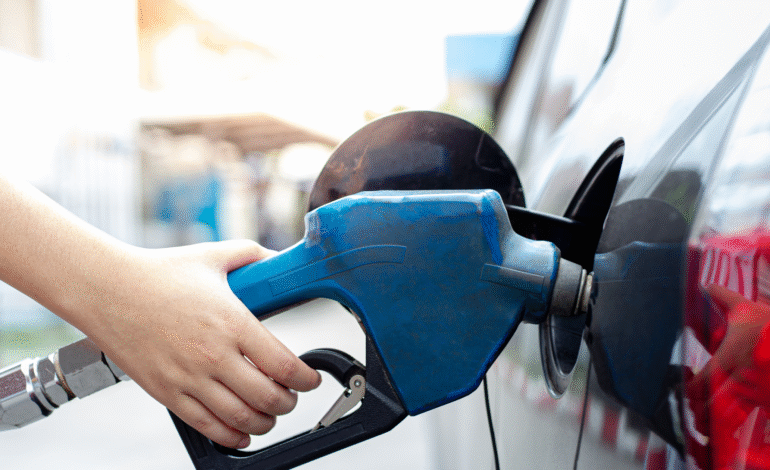UAE Fuel Prices Rise for July as Oil Markets Shift Globally

UAE Confirms Fuel Price Increase for July 2025
Motorists across the United Arab Emirates are facing a rise in fuel prices this July, according to the latest monthly announcement from the UAE Fuel Price Committee. The increase affects petrol and diesel rates across all categories and reflects a response to earlier global oil market gains in June.
Although these changes were anticipated based on oil price patterns, there is now cautious optimism that the upward pressure may be short-lived. Global benchmarks have dropped significantly in recent days, suggesting that future adjustments could bring some financial relief to residents and transport operators.
This price revision comes at a time when the demand for fuel typically increases across the UAE. With the onset of summer holidays, families, businesses, and logistics operators are especially mindful of transportation costs.
Detailed July 2025 Fuel Price Adjustments
For the month of July, Super 98 petrol is now priced at Dh2.70 per litre, compared to Dh2.58 in June. Special 95 petrol has increased to Dh2.58 per litre, rising from Dh2.47 in the previous month. The E-Plus 91 variant is now Dh2.51 per litre, up from Dh2.39. Diesel has also seen a notable rise, now costing Dh2.63 per litre compared to Dh2.45 in June.
Each of these changes represents a significant adjustment for both individual consumers and businesses. The cumulative impact of such increases can affect everything from daily commuting expenses to operational costs in logistics and supply chain sectors. The timing of the hike—coinciding with higher summer travel—is expected to place additional strain on household budgets.
The Oil Market Story Behind the Price Hike
The rise in July’s fuel prices was largely driven by oil price behavior during the first three weeks of June. Global crude markets saw a steady rally through that period due to fears of supply disruptions in the Middle East and rising demand forecasts. This upward momentum in global oil benchmarks directly influenced the July pricing decision.
However, by the end of June, oil prices underwent a sharp reversal. The sudden drop was attributed to a ceasefire agreement between Israel and Iran, which eased geopolitical tensions in a region that produces roughly a third of the world’s oil supply. With reduced concerns over disruptions, both Brent crude and West Texas Intermediate (WTI) benchmarks tumbled significantly.
Brent crude fell close to $67 per barrel, while WTI hovered around $65 per barrel. This marked the largest weekly drop in oil prices in over two years and ended a three-week rally that had previously driven prices upward.
What Triggered the Sudden Fall in Oil Prices
The recent decline in global oil prices was triggered primarily by geopolitical developments. The ceasefire between Israel and Iran removed one of the key risks to Middle East oil supply. With tensions easing, traders and investors quickly readjusted their positions, prompting a market correction.
Additionally, hedge funds and institutional traders increased their short positions, anticipating a further drop in oil prices. These speculative moves added more downward pressure, further accelerating the decline.
There is also growing speculation about a potential OPEC+ decision to raise production by 411,000 barrels per day in August. If implemented, this would be the fourth consecutive monthly output increase. A continued rise in supply, combined with plateauing demand, could exert further pressure on prices, potentially leading to more favorable rates for consumers in the coming months.
How UAE Fuel Prices Are Calculated and Why They Change
Fuel prices in the UAE are not fixed. Since 2015, the country has followed a deregulated pricing model that links domestic fuel prices with global oil markets. Each month, the UAE Fuel Price Committee evaluates international oil price movements, regional geopolitical factors, refining costs, and local logistics to determine the final rate.
Although local distribution costs are factored in, international oil benchmarks remain the primary driver of monthly fuel price changes. The July hike, therefore, reflects the upward trend seen earlier in June, before global oil prices dropped.
This pricing system provides transparency and allows for market alignment, but it also makes local fuel prices more responsive to international volatility. When oil prices rise due to global tensions or supply disruptions, UAE residents feel the impact. Conversely, a downturn in global oil prices often results in price reductions during subsequent monthly revisions.
Impact on Residents, Transport, and Logistics Sectors
Fuel price increases directly affect everyday expenses for residents. Commuters, families, and road-trippers alike must factor higher petrol and diesel costs into their monthly budgets, especially during the summer when domestic travel typically spikes.
For businesses in the transport and logistics sector, the impact is even more significant. Increased diesel costs mean higher operating expenses, which can affect delivery timelines, service fees, and profit margins. Many delivery firms, taxi companies, and public transport providers may need to reassess their cost structures to remain financially viable.
Retailers and manufacturers may also experience ripple effects, as transportation costs are embedded in the overall supply chain. Rising fuel prices often translate into higher prices for goods, especially those that rely heavily on cross-emirate transportation.
UAE Residents React to July Fuel Rate Hike
As expected, many residents have voiced concerns about the latest fuel price increase. The timing, which aligns with high summer utility costs and family vacations, has sparked conversations across social media and community forums.
Some motorists are considering more economical transportation choices. Public transit, carpooling, and ridesharing options are being explored more widely, while others are adopting fuel-efficient driving habits. The rising popularity of electric and hybrid vehicles is also receiving renewed attention, as drivers weigh the long-term savings versus traditional petrol-powered cars.
Business owners and transport operators, especially those running on thin margins, are closely monitoring fuel usage and optimizing delivery routes to offset the increase.
Could UAE Fuel Prices Fall in August?
Despite the July increase, recent market developments suggest that lower prices may be on the horizon. The decline in global oil benchmarks, driven by the Israel-Iran ceasefire and the potential OPEC+ production increase, has created favorable conditions for a future price reduction.
If these trends continue through July without new geopolitical disruptions, the UAE Fuel Price Committee may reduce pump rates in August. Lower global oil prices, combined with stable regional supply, would support such a move.
This prospect is welcome news for residents and businesses alike, offering a degree of hope as they navigate the current increase. While nothing is guaranteed in global markets, the signals from oil traders and international analysts are pointing toward softer prices in the short term.
Broader Economic Effects of Fuel Price Changes
Fuel price fluctuations in the UAE do not only affect vehicle owners. They have broader implications for the economy. Rising fuel costs tend to increase the cost of consumer goods, especially those transported long distances. This can lead to higher inflation, which affects all sectors of society.
The tourism industry, too, may experience shifts. Tourists who rent vehicles for desert drives or city tours might reconsider their plans or opt for more affordable transportation options. Travel behavior can shift based on changes in the cost of mobility, which in turn can affect hotel bookings, restaurant visits, and retail footfall.
Economic planners and analysts will be watching the fuel pricing trends closely, as they play a key role in shaping inflation expectations and fiscal policy considerations in the second half of the year.








1 Comment
[…] United Arab Emirates (UAE) has achieved a remarkable milestone in its economic diversification journey, with non-oil […]
Comments are closed.